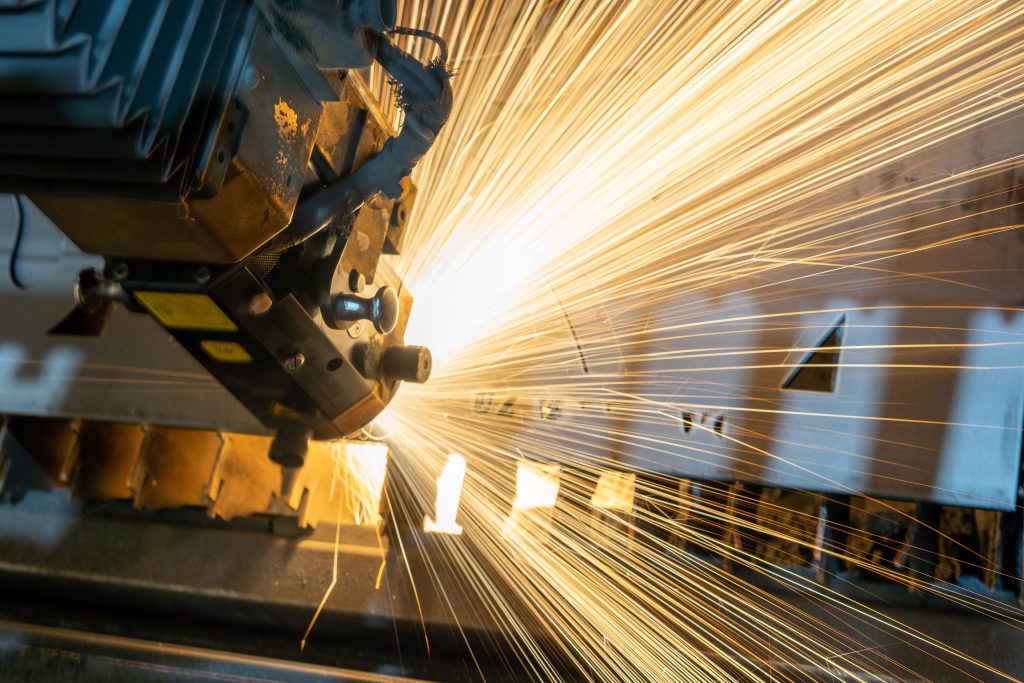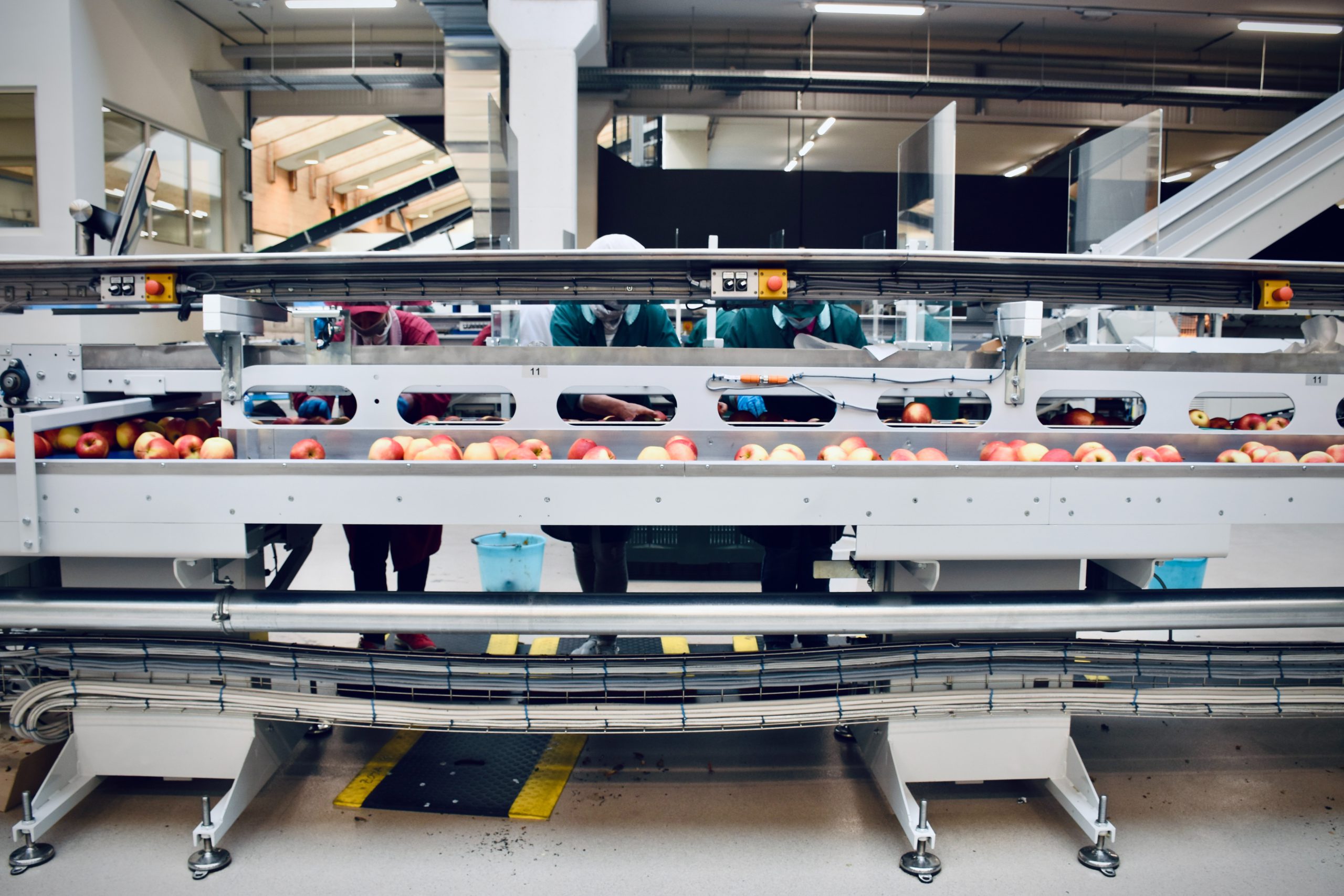
6 Creative Applications of AI in Manufacturing
Photo by Clayton Cardinalli on Unsplash
AI, computer vision, and machine learning are changing our mindset and lifestyle in many aspects.
This introduces us to a new era of manufacturing called Industry 4.0, which helps us get rid of time-consuming and tedious checks. We can do things more efficiently by replacing them with the computer vision system to ensure higher quality control on the production assembly line.
Using AI can be a crucial solution to the problems that are hard to detect with the naked eye.
In this post, we want to discuss two creative applications of AI in manufacturing. Stay tuned because you will get the most answers to your questions.
1. Securing a Safe Workplace

Photo by Nick Fewings on Unsplash
Automation can be scary since it reminds us of removing humans from jobs. However, automation can be necessary for specific tasks, especially when human health and safety are involved. Moreover, we often need to use robots to move beyond limitations and increase productivity.
With the covid outbreak, companies had to figure out a way to ensure their employees’ health and safety. AI was a viable option, especially for big manufacturing corporations dealing with vast amounts of data daily. These companies could monitor and check body temperature or assess employee interactions for contact tracking and sanitization purposes.
Also, the manufacturing sector can use the same technologies to prevent accidents or analyze post-incident causes using long-term safety solutions as soon as possible (for instance, slipping, falling, or tripping). These solutions ensure better safety for human resources, leading to continuous operation.
2. Machine Maintenance

Photo by ThisisEngineering RAEng on Unsplash
Keeping the facility and vital production equipment running are some of the most important priorities for all manufacturers. Artificial intelligence and machine learning can significantly help manufacturers transform their traditional systems into highly advanced and modern ones for better maintenance management. Doing so enables manufacturing companies to say goodbye to responsive maintenance and usher in the era of predictive and prescriptive maintenance. AI and ML are excellent tools to boost the efficiency and agility of machinery maintenance.
Engineers can detect both apparent failures and foresee when potential faults may occur by integrating sensors and machine data with artificial intelligence. Some companies have moved beyond maintenance management toward prescriptive maintenance. This approach allows manufacturing organizations to enhance the maintenance management lifecycle by incorporating predictive failure data with other business data (work schedules, expenses, risk factors, workloads). AI lets engineers know when they need to maintain the machines, how long they may run without any faults, plan for equipment maintenance, and even suggest required spare parts. AI helps us boost uptime, minimize maintenance labor expenses, and adjust spare parts costs for better financial management.
3. Quality Checks in Product Manufacturing

Photo by Mediamodifier on Unsplash
Detecting internal problems before making a product or using equipment can be tricky for many manufacturers. Experts should assess all aspects to thoroughly see potential flaws. Otherwise, detrimental consequences can occur, leading to major production or assembly line faults.
Artificial intelligence and machine learning can revolutionize the work practices of manufacturers by integrating human intelligence with state-of-the-art technologies.
For example, engineers can detect minor flaws, helping them address the problem before becoming a major one. Doing so enables companies to boost the overall quality and performance of products. That’s precisely why many manufacturing companies are using AI-driven tools to identify potential defects in the design or production processes. AI can significantly help them ensure high-quality products through AI’s in-depth quality testing.
4. Exceptional Predictive Maintenance

Blue business vector created by ucoyxmasayun – www.freepik.com
Equipment faults are the nemesis of manufacturing companies, leading to downtime and high costs. Therefore, manufacturers must properly and regularly maintain the machinery to avoid unnecessary costs. Sadly, this is often neglected until a catastrophic failure happens, when it’s too late for effective fixes.
The manufacturing industry can now utilize ML-powered predictive tools to solve these problems and schedule periodic maintenance. In some cases, we can also incorporate IoT and cloud sensors into our systems to further facilitate the regular process maintenance and fix crucial equipment flaws that may occur in the future.
Manufacturing businesses can automate their processes by deploying AI-driven solutions and implementing innovative operations, reducing cost overheads and downtime.
5. Supply Chain Optimization

Clip art vector created by brgfx – www.freepik.com
Companies must deal with super complex supply chains, especially the big ones with thousands of parts and locations. These companies can immediately employ AI to deliver their products and services to customers. Machine learning algorithms help engineers and producers enhance the entire supply chain and improve productivity. They can finally answer essential yet vital questions like “how many capacitors should be ordered for next year ” or “what’s the best method to transfer product A” without depending on trial and error.
Managing inventory is essential for all factories. Without it, the production line may be halted, making it a challenging area to master. Each process needs specific amounts and types of raw material to work; manufacturers must keep an eye on the material level to plan before they are consumed. AI can facilitate this challenging process and help factories and companies keep their factory floor stocked with all necessary materials. AI can help managers monitor quantities and expiration dates and streamline the distribution process across the factory floor.
6. Predicting Demand and Price Effectively

Clip art vector created by brgfx – www.freepik.com
The process of forecasting a commodity/product/service price involves evaluating various factors such as its characteristics, demand, seasonal trends, prices of other commodities (such as fuel), and offers from multiple suppliers. Staying on top of all these factors can be tricky for manufacturing companies.
AI systems allow the manufacturing sector to combine predictive analysis and human intelligence to effectively predict the pricing and demand of products. These modern technologies help us gather data from different sources and evaluate them to make precise The AI can predict what price will attract customers and maximize sales at the same time.
Conclusion
Several companies are already using AI to improve their processes, enhance safety, help manual workers better utilize their skills, and ultimately increase profits.
AI is an excellent option in manufacturing to run a business cost-efficiently, and it’s here to stay. Using AI, businesses can detect and diagnose problems before they occur, enhance assembly lines and improve their businesses.
Interested in computer vision but haven’t started yet?
The great news is that AI is still in its infancy, and your manufacturing processes can still benefit from AI systems.
If you are interested in learning more about AI and its applications in the Manufacturing Industry or would like to contribute to this field, visit THIS LINK to explore further information and get involved.
Sources:
https://www.themanufacturer.com/articles/ai-transforming-manufacturing/
https://www.v7labs.com/blog/ai-in-manufacturing
https://www.iotforall.com/5-ways-industrial-ai-is-revolutionizing-manufacturing
https://roboticsandautomationnews.com/2021/07/20/top-5-cases-to-use-ai-in-manufacturing/44239/







Responses